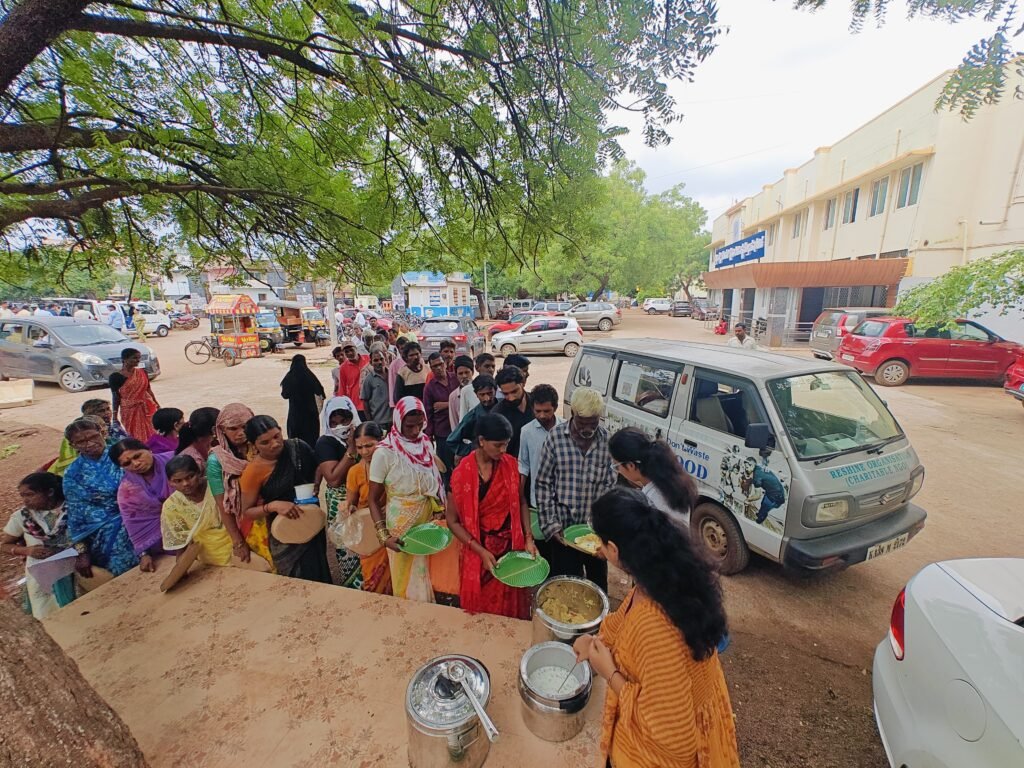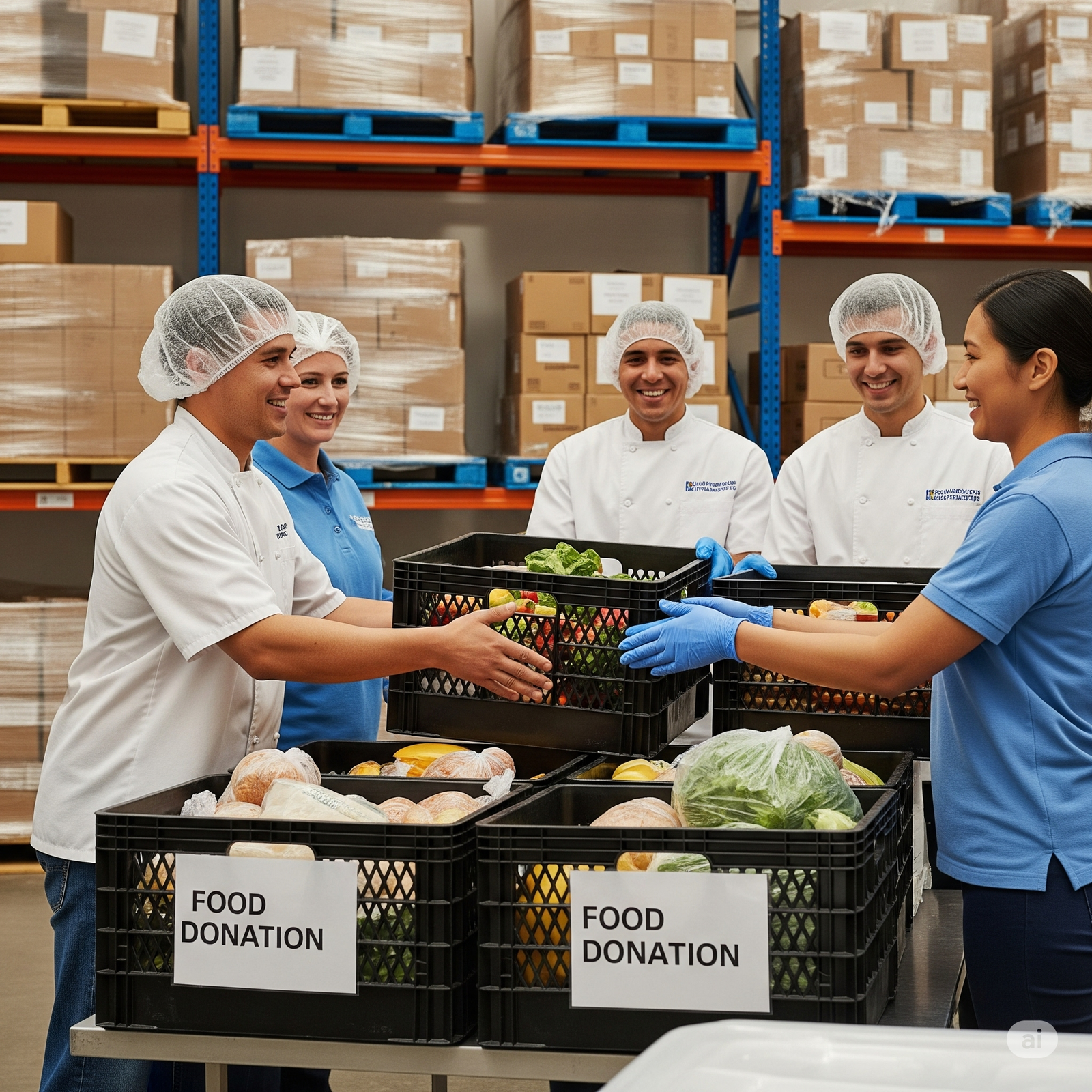Table of Contents
Food donation and ESG are increasingly interconnected as businesses navigate the demands of responsible growth and transparent impact. In today’s corporate environment, Environmental, Social, and Governance (ESG) principles have become essential benchmarks for long-term success, particularly in the food industry.
Consumers, investors, and regulatory bodies now expect companies to demonstrate authentic commitments to sustainability and community well-being.
Food donation offers a clear and measurable way for food businesses to align with ESG expectations. By reducing food waste and redirecting surplus resources to communities in need, companies not only address pressing social issues like hunger but also reduce environmental impact.
This alignment makes food donation and ESG integration a powerful strategy for organizations aiming to meet sustainability benchmarks and build a responsible brand image.
Understanding ESG in the Food Industry
ESG is a framework used by businesses to guide sustainable and ethical practices. For food businesses, it plays a crucial role in shaping operations that are both profitable and responsible.
Environmental (E): Reducing ecological impact
This focuses on how a company affects the planet. Food businesses are expected to reduce carbon footprints, manage resources efficiently, adopt sustainable farming, and minimize food waste.
Social (S): Serving communities responsibly
This examines how a company interacts with people—employees, suppliers, and communities. It includes fair labor practices, community engagement, and supporting causes like hunger relief through food donation.
Governance (G): Ensuring ethical operations
Governance involves how a company is managed and whether its practices are ethical and transparent. This includes honest reporting, strong leadership, and clear supply chain accountability.
The process of Food companies that integrate these principles strengthen their ESG performance—and initiatives like food donation and ESG alignment reinforce that commitment.
Food Donation and Environmental (E) Goals
Food donation is a proven environmental strategy, and when viewed through the lens of food donation and ESG, it becomes a measurable tool for reducing environmental harm.
Waste reduction through redistribution
Every year, about one-third of all food produced for human consumption is wasted, according to global food waste statistics by FAO. While millions go hungry, tons of edible food are discarded.
By donating surplus food, companies reduce landfill waste and ensure food reaches those who need it most. This not only lessens the environmental load but also strengthens the link between food donation and ESG performance.
Efficient use of natural resources
Wasted food also means wasted resources. Globally, food production uses around 1.4 billion hectares of land and consumes water equal to 38 times the total household usage in the United States.
Food donation helps avoid this waste by extending the life of food products, promoting better resource management across the supply chain.
Lowering greenhouse gas emissions
When food waste decomposes in landfills, it releases methane—a greenhouse gas more powerful than carbon dioxide.
By diverting food from landfills through donation, businesses help cut down emissions and support climate action, further aligning with environmental goals under the ESG framework.
Food Donation and Social (S) Goals
The social component of ESG focuses on how companies support people—both within and outside the organization. Food donation plays a powerful role in strengthening this dimension by addressing real human needs and fostering community connections.
Reducing hunger and improving food access
Food insecurity remains a pressing issue, especially in underserved areas. By donating surplus food to food banks and community programs, food companies help ensure that nutritious meals reach those in need.
This initiative reduces inequality and directly contributes to healthier, more stable communities—reinforcing the link between food donation and ESG.
Building community partnerships and trust
When companies collaborate with local organizations to combat food waste and hunger, they build goodwill and long-term relationships.
These partnerships reflect a strong sense of corporate social responsibility and create meaningful local impact. In turn, this enhances the company’s social reputation among customers, employees, and the broader public.
Supporting global development priorities
Food donation also aligns with several key United Nations Sustainable Development Goals (SDGs), including:
SDG 2: Zero Hunger – working to end hunger and improve food security
Then SDG 1: No Poverty – supporting efforts to reduce poverty through food access
Followed by SDG 3: Good Health and Well-being – enabling better nutrition and wellness
And SDG 12: Responsible Consumption and Production – reducing food waste sustainably
These alignments help companies show tangible results toward social impact, a critical aspect of ESG reporting.
Food Donation and Governance (G) Goals
While governance may seem less visible, the connection between food donation and ESG becomes clear through its influence on transparency and reputation.
Demonstrating ethical business conduct
A company’s involvement in food donation reflects its commitment to transparency, accountability, and social ethics.
Businesses that actively reduce waste and support community welfare build stronger reputations and foster trust among stakeholders. These actions reinforce the governance pillar of food donation and ESG strategy.
Reducing reputational and operational risks
Companies that ignore food waste or fail to act on social issues face growing reputational risk. Implementing responsible donation programs helps avoid public scrutiny and positions the company as a proactive, value-driven organization.
This can reduce compliance risks, especially as sustainability regulations evolve.
The Business Case for ESG-Aligned Food Donation
Implementing ESG practices—especially through food donation—is no longer optional for future-facing companies. It’s a critical step toward long-term viability, social credibility, and environmental responsibility.
Driving long-term value through responsible practices
Companies that embed food donation into their ESG strategies build business models that are profitable, fair, and sustainable.
These companies are more likely to attract ethical investors, build brand loyalty, and stay resilient in a changing regulatory and market landscape.
Leveraging technology for better outcomes
Modern solutions like blockchain, AI, and supply chain monitoring tools help track surplus food and optimize redistribution.
These tools support food donation programs, improve ESG reporting, and enhance traceability—all while reducing operational waste.
Building a fairer, greener food system
By integrating food donation with core ESG efforts, businesses contribute to a food system that is more equitable, efficient, and transparent.
From farmers and suppliers to consumers and communities, the positive ripple effects support both people and the planet.
Final Word

Food donation is not just a charitable act—it is a strategic decision that enhances a company’s ESG performance across all dimensions. As sustainability expectations rise, organizations that embed food donation into their operations will lead the shift toward a responsible and resilient food ecosystem.
Take action today. Join hands with Reshine Organisation and be part of the solution. Donate your surplus food and help us build a sustainable future where no food goes to waste and no one goes hungry.
To know how Food Redistribution can impact lives you can read our dedicated blog.




